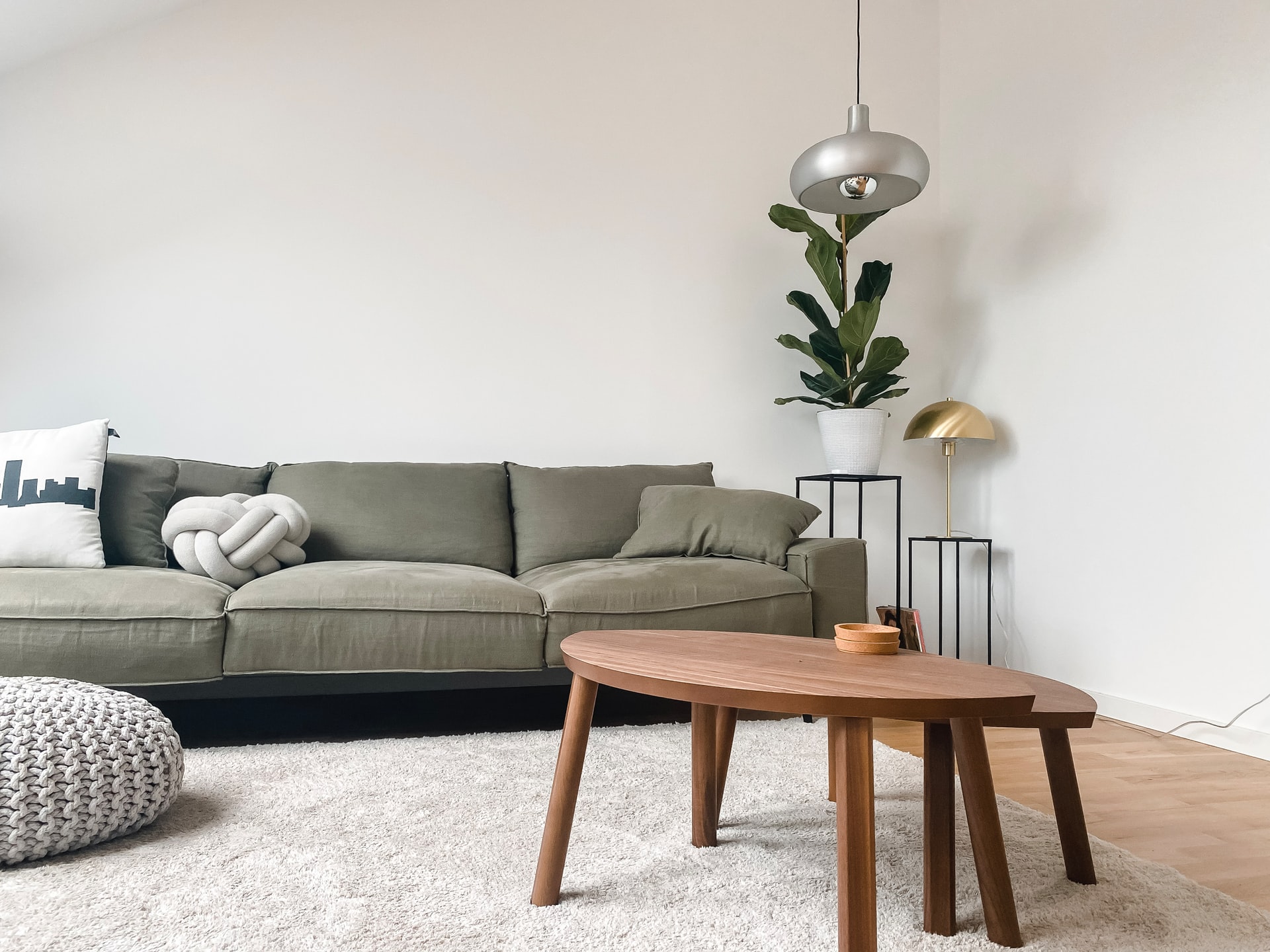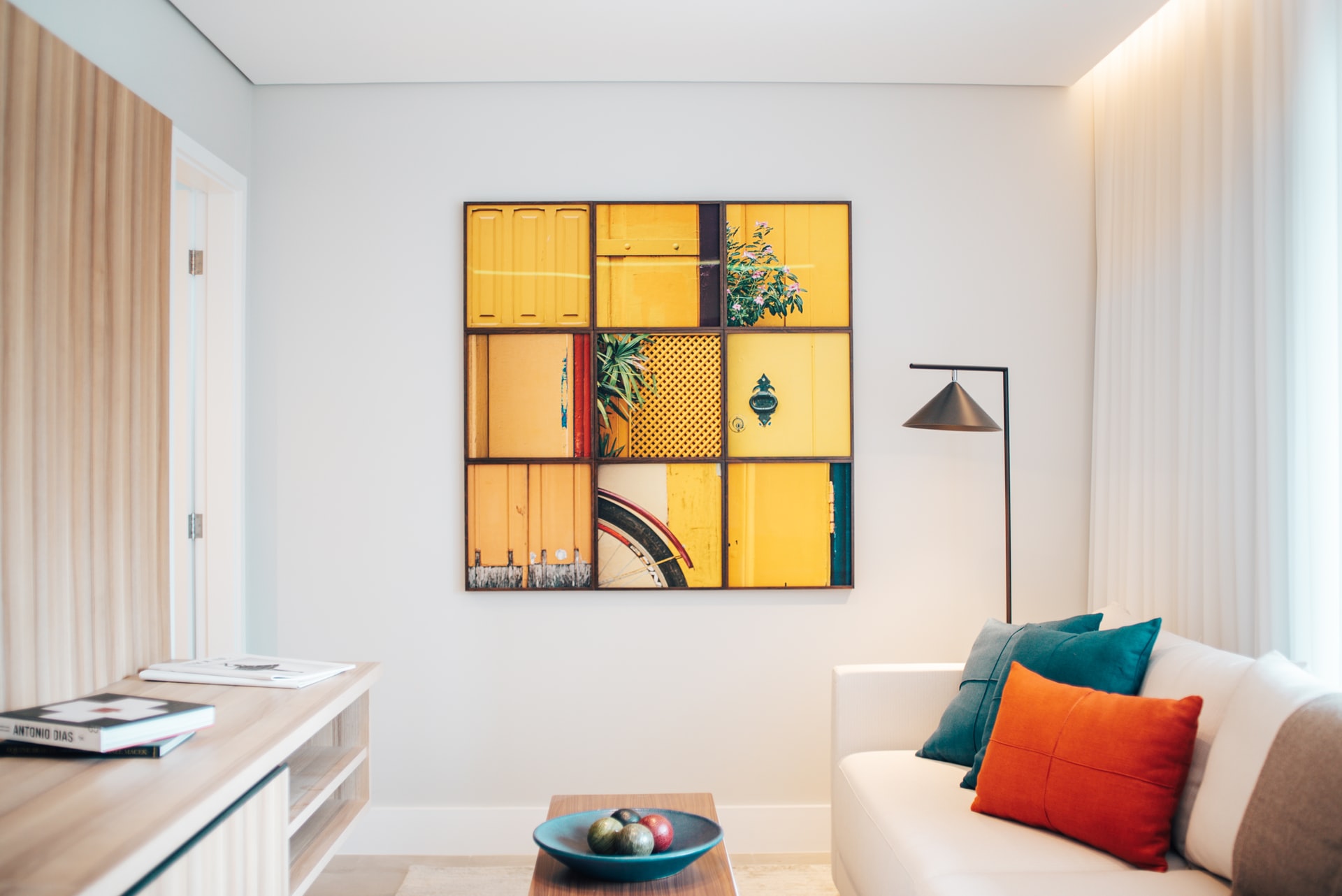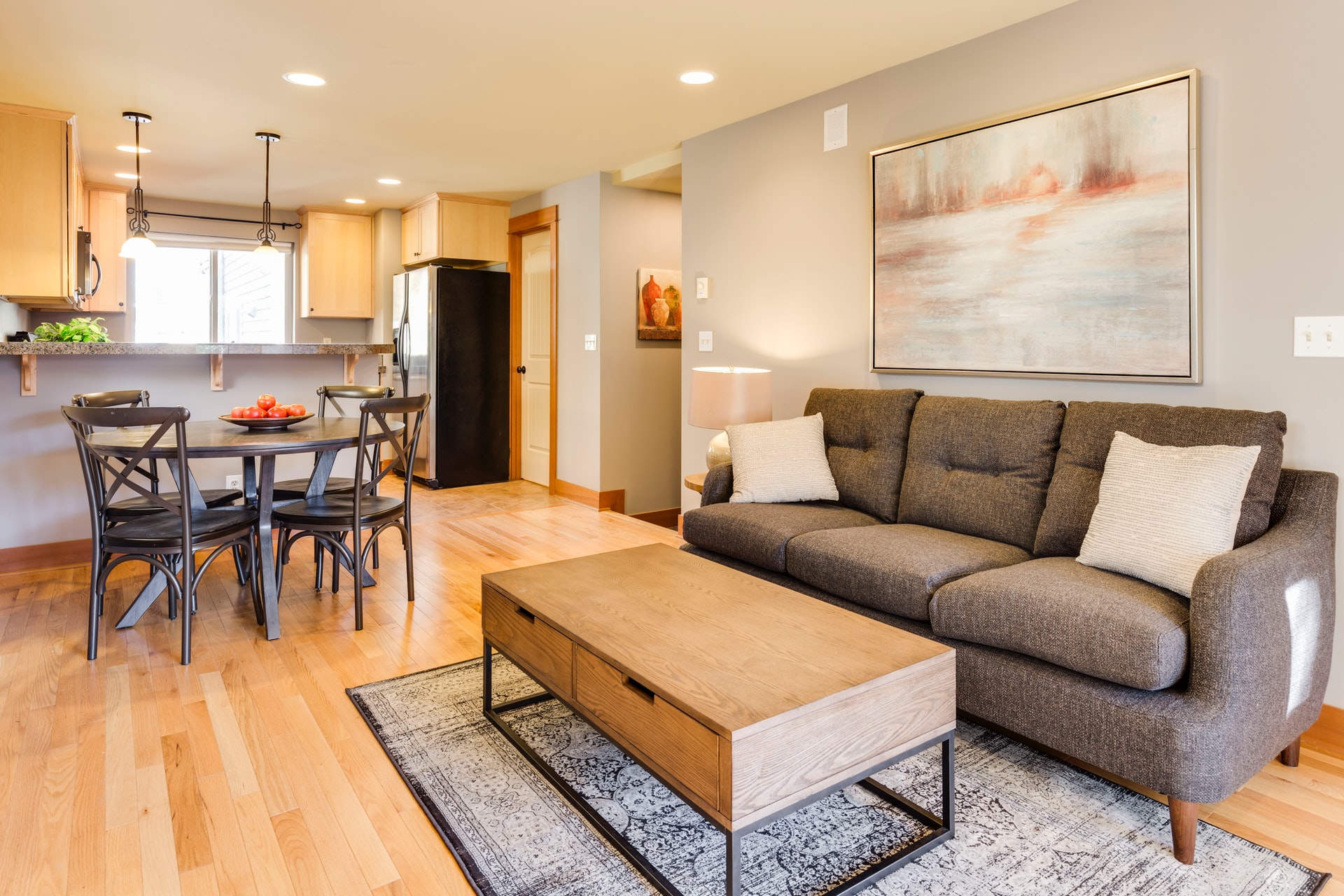It can feel like decorating a small area is an insurmountable task. You want to jam as much as possible into the space, but it shouldn’t seem claustrophobic. You want it to have personality, but it can’t appear cluttered or chaotic. However, a little area can be just as stylish (guides4homeowners.co.uk) than their larger counterparts. You don’t have to forgo elegance just because you’re starting off in a studio apartment or prefer to live a more modest lifestyle. We’ve compiled a list of our favorite small-space design ideas to help you get started on your own.
Maintain a Clear Floor
You’ll need space for the necessities, but even the most beautifully decorated little room will be useless if you can’t walk about it. Floating components, such as shelving and nightstands, can help keep the ground clear of obstacles while also providing extra storage space if needed. Instead of floor lamps, use sconces and wall lights.
 Folding Pieces is the way to go.
Folding Pieces is the way to go.
Do you really need a desk and a dining table 24 hours a day, seven days a week? Consider investing in furniture that can be folded away when not in use. You’ll save room on the floor and avoid the heaps of mail and paperwork that invariably accumulate on these surfaces. When not in use, folding doors can hide clutter in a one-wall kitchen.
Lighting should be a priority.
Because of the lack of or limited windows in small spaces, they can feel dark. Make up for the absence of natural light in each room, from the kitchen to the bedroom, by installing plenty of light sources. For a pleasant and lively ambience, pair striking ceiling fixtures—either a lovely pendant or an elegant flush mount, depending on your ceiling height—with sconces or table lights.
Ashley Darryl used clean-lined furnishings and carefully picked accents to give her friend Jeremy Globerson’s one-bedroom flat in Manhattan a modern makeover. “To assist us create the basic and inviting room we were pursuing, we used a mixture of old and new pieces,” Darryl adds. Above the fireplace are Apparatus sconces and a painting by Hector Frank.
If you don’t have a lot of natural light, using mirrors to reflect it around the room might help you make the most of what you do have. Mirrors can also assist to make a room appear larger by giving the impression of a few more square feet. Consider using a giant mirror to line a wall or making a gallery wall of various sizes and forms.
The guest bath is brightened with vintage French mirrors and a Colombian fan; the wall tile and sink are both coral stone, and the sink fittings are by Axor.
Selecting the Right Rug
In terms of size, a rug is the one item you don’t want to scrimp on. A modest rug can make the space feel even smaller. Choose a floor covering that is large enough to accommodate most of the furniture, or go wall-to-wall.
Vintage leather-and-walnut chairs mix with a Poltrona Frau marble cocktail table and a hand-knotted silk rug in the living room of a Manhattan apartment designer Paris Forino altered for a luxury real estate broker and his fashion designer husband.
 Don’t be afraid to take risks.
Don’t be afraid to take risks.
It doesn’t have to be a white box just because it’s a little place. You may still use bright colors and make the most of your small space. A jewel box sensation can be achieved by using a deeper hue of paint on the walls and ceiling.
Todd Alexander Romano’s New York City pied-à-living terre’s room features lacquered walls and a custom-made St. Thomas–style sofa upholstered in Lee Jofa velvet. Contrasts include a Ward Bennett wicker Sled chair and prints by Robert Goodnough and Josef Albers.
Maintain Consistency
In a tiny place, there may only be so many things to look at, so make sure they all fit. Whether it’s bright and airy or dark and dramatic, stick to a limited color pallet. Examining items with an editor’s eye will ensure that they truly belong and that the area does not get cluttered.
Look for pieces that are deserving of their spot.
Make the most of your space by investing in storage-friendly furniture. Choose a bed with built-in drawers or benches and ottomans with storage space for blankets and sweaters. In a tiny space, each piece must be able to carry its own weight: a daybed may double as a sofa and a guest bed.
 Allow Pieces to Exhale
Allow Pieces to Exhale
Furniture shoved up against the wall and nestled so tightly together that it’s virtually stacked screams “I don’t have enough room.” If possible, move furniture away from the wall and leave enough space between items. (Anything that isn’t used on a regular basis, such as side tables or accent chairs, may have to go.)
Delicate moldings were specially made to match the flat’s original moldings in the living room, with walls painted in Benjamin Moore’s “Decorator’s White,” a color that was used throughout the apartment. “We wanted the home to feel light and cheerful,” Greenberg explains, “and we wanted to let the space’s materiality speak for itself rather than using a bright palette.”
Experiment with scale.
In a small room, there’s no need to employ miniature furniture and decor. The trick is to select a few statement pieces that will capture attention. Regular-size furniture and large-scale art can be used; you’ll just need to utilize fewer pieces in total.





